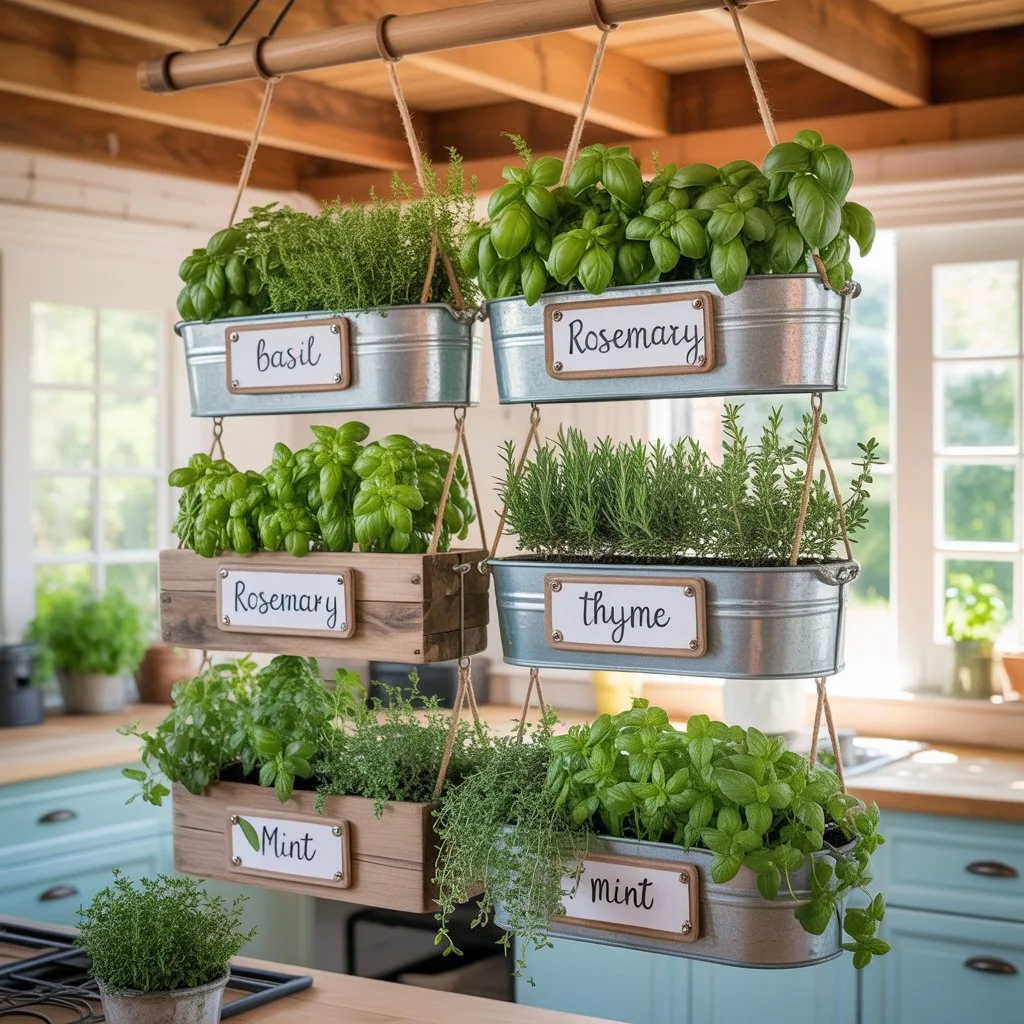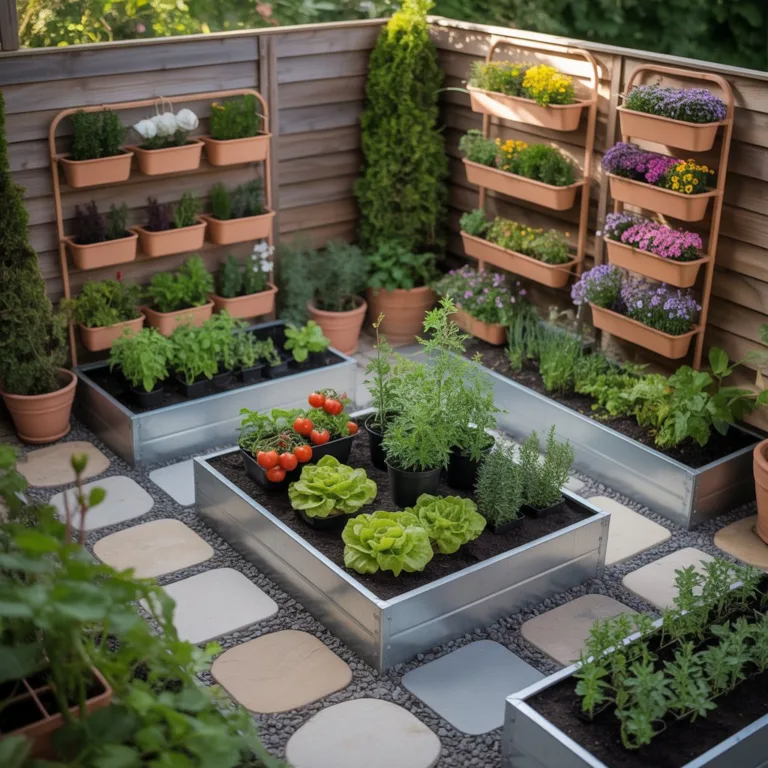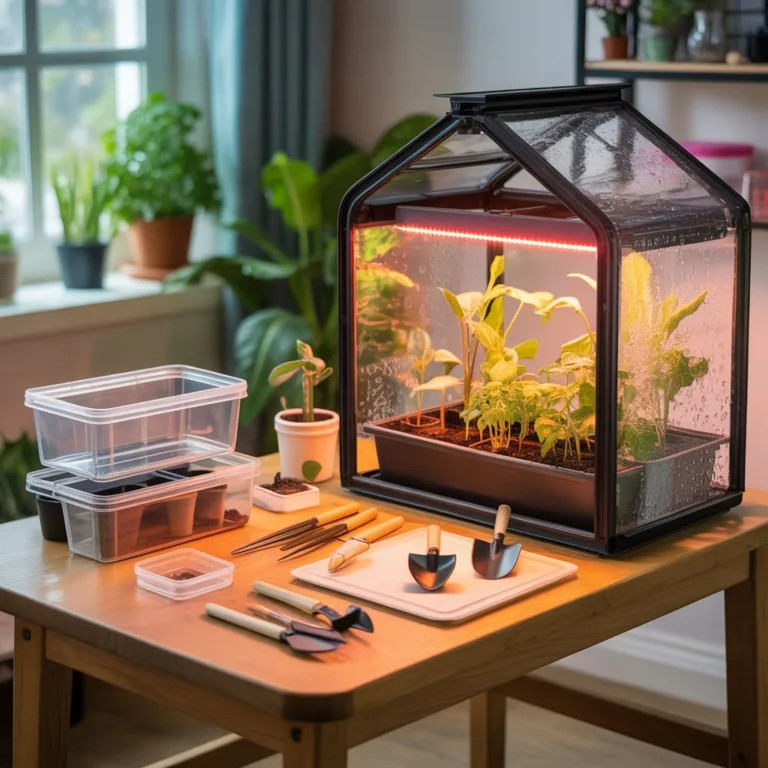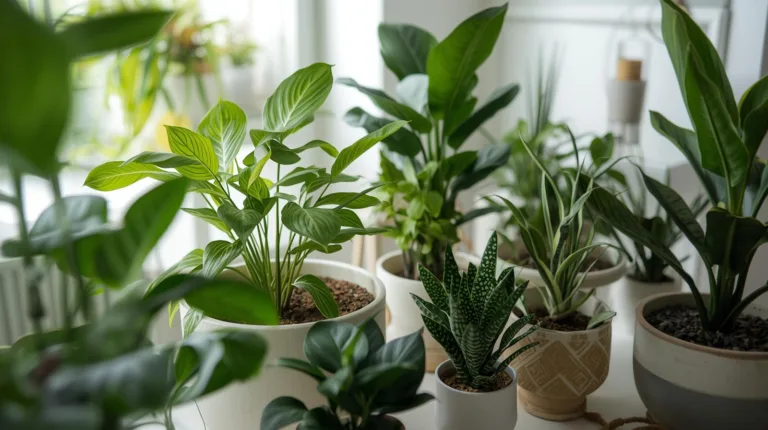Growing your own herbs is one of the most rewarding and sustainable ways to bring freshness and flavor into your home. Whether you live in a small apartment or a spacious house, a hanging herb garden is a creative solution that combines practicality with natural beauty. It saves space, improves air quality, and adds a touch of green vitality to any environment — from kitchens to balconies and patios.

Making your own hanging herb garden allows you to cultivate herbs you love — basil, mint, rosemary, parsley, thyme, and more — while embracing a greener lifestyle. You can reuse everyday materials, craft personalized planters, and transform underused spaces into lush vertical gardens.
The Beauty and Benefits of a Hanging Herb Garden
A hanging herb garden goes beyond decoration. It represents a lifestyle that values sustainability, mindfulness, and connection with nature. Herbs are resilient, aromatic, and easy to grow, making them perfect for both beginners and experienced gardeners.
Key Benefits Include:
- Space Efficiency: Hanging designs maximize vertical areas, ideal for small kitchens or apartments.
- Freshness Anytime: Having herbs within reach encourages healthier cooking and reduces waste from store-bought herbs.
- Sustainability: Growing herbs at home reduces packaging waste and transportation emissions.
- Air Purification: Plants naturally filter toxins, improving indoor air quality.
- Therapeutic Value: The process of planting and nurturing herbs relieves stress and brings a calming sense of purpose.
Creating your own hanging herb garden means designing something uniquely yours — blending creativity, functionality, and sustainability.
Choosing the Right Location
Before starting, it’s essential to select the perfect spot for your hanging herb garden. Herbs thrive with sufficient light, air circulation, and moderate humidity.
Indoor Locations:
- Near a south- or west-facing window to capture natural sunlight.
- Above a kitchen counter or sink for easy access while cooking.
- In a sunroom or enclosed balcony, where air and light flow naturally.
Outdoor Locations:
- On a balcony railing or patio wall, where herbs can enjoy direct sunlight.
- Under a pergola or eave for partial shade, ideal for herbs like parsley and mint.
- Along a fence or trellis, creating a vertical garden effect.
Aim for at least 5–6 hours of sunlight per day. For low-light areas, consider using LED grow lights to maintain healthy growth.
Choosing Herbs for Your Hanging Garden
When planning your hanging herb garden, think about your cooking habits, scent preferences, and available light. Some herbs thrive in full sun, while others prefer a bit of shade.
Sun-Loving Herbs:
- Basil: Loves warmth and sunlight; ideal for Mediterranean dishes.
- Rosemary: Drought-tolerant and aromatic.
- Thyme: Hardy and perfect for culinary and ornamental use.
- Oregano: Great for cooking and easy to maintain.
Partial Shade Herbs:
- Mint: Refreshing and vigorous, thrives in indirect light.
- Parsley: Prefers moderate light and consistent moisture.
- Cilantro: Best in cooler conditions and partial sun.
- Chives: Adaptable and grows well indoors.
Combining these varieties not only enhances visual diversity but also provides a continuous supply of herbs year-round.
Sustainable Materials for DIY Hanging Herb Gardens
Creating a hanging herb garden doesn’t require expensive materials. In fact, reusing items you already have makes the project eco-friendly and cost-effective.
Recycled Materials You Can Use:
- Plastic bottles or jugs: Cut them in half to create individual planters.
- Tin cans: Clean and decorate for a rustic industrial look.
- Glass jars: Ideal for small herbs or hydroponic setups.
- Wooden crates or pallets: Perfect for building multi-tiered vertical gardens.
- Old baskets or macramé hangers: For a natural, boho-inspired design.
Support Materials:
- Strong rope or twine (natural jute or cotton).
- Hooks, nails, or ceiling anchors for hanging.
- Drainage materials like pebbles, charcoal, or mesh.
Reusing and upcycling encourages creative thinking and reduces your ecological footprint.
Preparing Containers and Soil
Proper drainage is crucial for healthy herbs. Before planting, make sure each container has drainage holes at the bottom. If you’re using glass or other non-perforated containers, create a drainage layer with small stones or clay pebbles.
Soil Mix Recommendations:
- Use a lightweight potting mix with compost and perlite for aeration.
- Avoid heavy garden soil — it compacts easily and restricts root growth.
- For organic growth, blend your own mix using:
- 50% compost
- 30% coconut coir or peat moss
- 20% perlite or sand
This ensures proper drainage, moisture retention, and nutrient balance.
You can also add a natural fertilizer like worm castings or crushed eggshells to enrich the soil without chemicals.
Designing Your Hanging Herb Garden
The layout of your hanging garden depends on available space and aesthetic preference. There are many ways to arrange your herbs creatively.
1. Vertical Hanging Garden
Mount rows of recycled bottles, pots, or planters on a wooden board or wall. Use adjustable hooks so you can move herbs based on their sunlight needs.
2. Tiered Hanging Garden
Use wooden planks or macramé to create layers. This design adds visual appeal and makes it easier to water multiple herbs simultaneously.
3. Hanging Rail System
Attach small pots to a metal or wooden rod using S-hooks or wire hangers. This system is ideal for kitchens, as it keeps herbs accessible and organized.
4. Recycled Bottle Tower
Stack cut plastic bottles vertically, connecting them with string or wire. Each bottle serves as a planter, allowing water to drip down and nourish lower levels — an efficient watering system.
5. Wall Pocket Garden
Use a fabric shoe organizer or felt planter pockets. Each pocket can hold soil and herbs, creating a living green wall.
Whichever design you choose, make sure it allows for easy watering, good air flow, and sunlight distribution.
Planting and Arranging Your Herbs
Once your containers and setup are ready, it’s time to plant. Fill each container with the prepared soil mix, leaving an inch of space at the top.
Gently loosen the herb’s root ball before planting, and position it so that the roots spread evenly. Press the soil lightly to secure the plant, but avoid compacting it.
Arrange herbs by growth habit and light needs:
- Place sun-loving herbs higher up, where light is stronger.
- Keep shade-tolerant herbs lower or in partially covered spots.
- Combine cascading herbs like oregano or thyme with upright ones like basil or rosemary for visual balance.
Watering and Maintenance
Consistent care ensures your herbs thrive year-round. Hanging gardens tend to dry out faster than ground plants, so monitoring moisture is key.
Watering Tips:
- Check soil moisture daily by touching the surface. If dry, it’s time to water.
- Use a spray bottle or watering can with a narrow spout for precision.
- Avoid overwatering — soggy soil can lead to root rot.
Fertilizing:
Feed your herbs monthly with organic liquid fertilizer such as compost tea or diluted seaweed extract. Over-fertilizing can alter flavor, so use moderation.
Pruning:
Regularly trim herbs to encourage bushier growth. Snip the tops instead of the bottom leaves to maintain a full, balanced shape.
Pest Management:
Prevent infestations with natural solutions:
- Spray diluted neem oil or peppermint essential oil to deter insects.
- Keep leaves dry to reduce fungal issues.
- Encourage beneficial insects like ladybugs if growing outdoors.
Adapting to Seasons
If you live in a region with cold winters, bring your hanging herb garden indoors before the temperature drops. Herbs like basil and parsley are sensitive to frost, while rosemary and thyme tolerate cooler weather.
During winter months, position your garden near a sunny window or use a grow light for 8–10 hours daily. Maintain humidity by misting plants or placing water trays nearby.
In summer, check your herbs more frequently for dryness or sunburn, especially if they hang in direct sunlight.
Creative Decoration Ideas
Your hanging herb garden can be as stylish as it is functional. Here are ideas to personalize your project:
- Label each herb with handmade tags using wooden sticks, stones, or chalkboard paint.
- Decorate containers with paint, twine, or fabric wraps to match your interior.
- Add small LED fairy lights for a cozy evening glow.
- Mix herbs with edible flowers like nasturtiums or marigolds for color and beauty.
Combining creativity and sustainability turns your hanging herb garden into a natural piece of living art.
Troubleshooting Common Issues
Even with proper care, you may face challenges. Recognizing problems early ensures your garden remains healthy.
Yellowing Leaves: Often caused by overwatering or poor drainage. Check holes and adjust watering frequency.
Weak Growth: May indicate low light or nutrient deficiency. Move the plant to a sunnier spot and apply compost tea.
Pests: Use mild soap sprays or essential oil blends instead of chemical pesticides.
Wilting Herbs: This could be from heat stress or lack of water. Mist plants lightly and move them to partial shade.
Patience and observation are key. Every herb behaves differently, so pay attention to their signals.
Teaching and Sharing Through Gardening
Creating a hanging herb garden can also become a valuable educational or family activity. Children can learn about sustainability, plant biology, and responsibility through hands-on experience.
It’s a great opportunity to discuss topics like composting, recycling, and the importance of local food systems. In classrooms or community spaces, such projects promote teamwork, creativity, and environmental awareness.
Sharing herbs with neighbors or friends can also inspire others to start their own gardens, expanding the culture of eco-friendly living.
Living Sustainably, One Herb at a Time
Building a hanging herb garden is more than a craft — it’s an act of mindfulness and environmental care. Every leaf grown without chemicals, every recycled container used, and every meal seasoned with homegrown herbs contributes to a more sustainable lifestyle.
Whether hanging near your kitchen window or brightening a balcony, this small garden symbolizes balance between nature and human creativity. Start with a few herbs, experiment, and watch your green space grow — nurturing both your plants and your connection to the earth.

Sofia Greenfield is a sustainable gardening expert and environmental educator who inspires families and urban gardeners to cultivate green spaces responsibly. She shares practical tips on growing vegetables, herbs, and flowers using eco-friendly and recycled materials, emphasizing the joy of gardening while protecting the planet.



